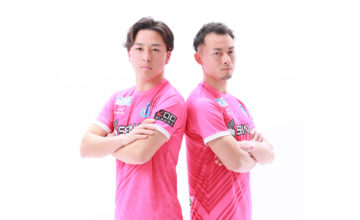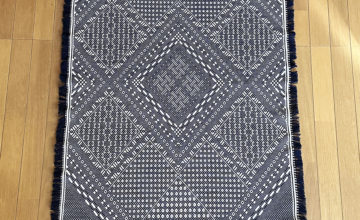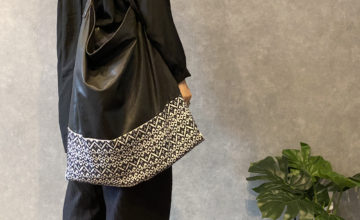Kogin Works Exhibition @watashi_to_kogin_to
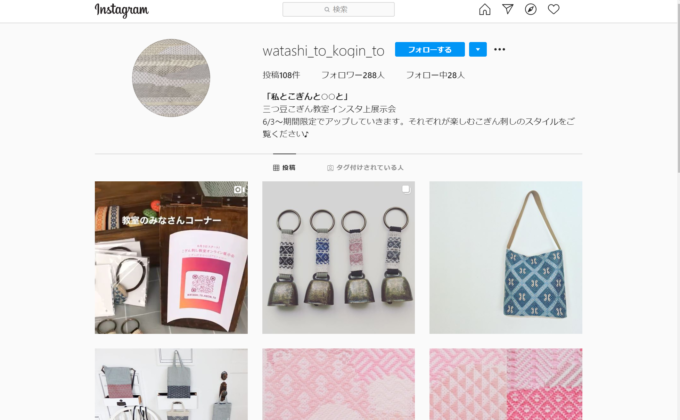
In June, the account @watashi_to_kogin_to was opened on Instagram. This account presents the works of people who gather at the Kogin lesson in Aomori prefecture. It’s a great account to enjoy various kogin-zashi, from big kogin works to small cute accessories. I communicated with Yuko Kudo as Mitsumame that is kogin works unit in Aomori, which has launched this account.
Mitsumame-三つ豆- is a team united by Kudo-san, her mother and her aunt, who creates kogin-zashi and sashiko works. Currently, her mother and aunt can’t make works because of eye ailments, but they still gather regularly and work to make rags and wipes and continue the activity of Mitsumame while chatting.

In 2019 and 2018, Ms. Kudo was exhibiting their works at Kogin Fes with her students in Kogin lesson. This year, she wanted to go out of the Kogin Fes and walk around Hirosaki City so that everyone can enjoy a lot of kogin, so they planned to exhibit their work at Indria, the venue of her lesson. However, due to COVID-19, all the events in Aomori prefecture were canceled. So her exhibition was canceled. And so, she decided to hold an exhibition on Instagram instead.
The works presented at @watashi_to_kogin_to was made by the members who gathered in the kogin lesson of indriya in Hirosaki City.
The title of the exhibition is “I, Kogin and ◯◯”.
~ Each person has their own reasons for starting Kogin. And each favorite color and style. Everybody different and everyone great.~
Whether you’re a beginner or a veteran, you’re enjoying yourself to the best of your ability. The charm of Kogin, whose personality is reflected in their works of each person. From this sentence, you can feel that everyone is making a hearty classroom naturally while accepting each other through Kogin.
–– At the time of the photo session for this Instagram, some people said, “It looks like a family,” after seeing how everyone is shooting and working together. I was really happy to hear that. And I had my heart touched by thought that even when spending time away from family and work, we can be like a family who recognizes each other. ––
I have a bit disappointing now that I could not to met and interviewed directly with them and Ms. Kudo. Unfortunately, this lesson ended in March.
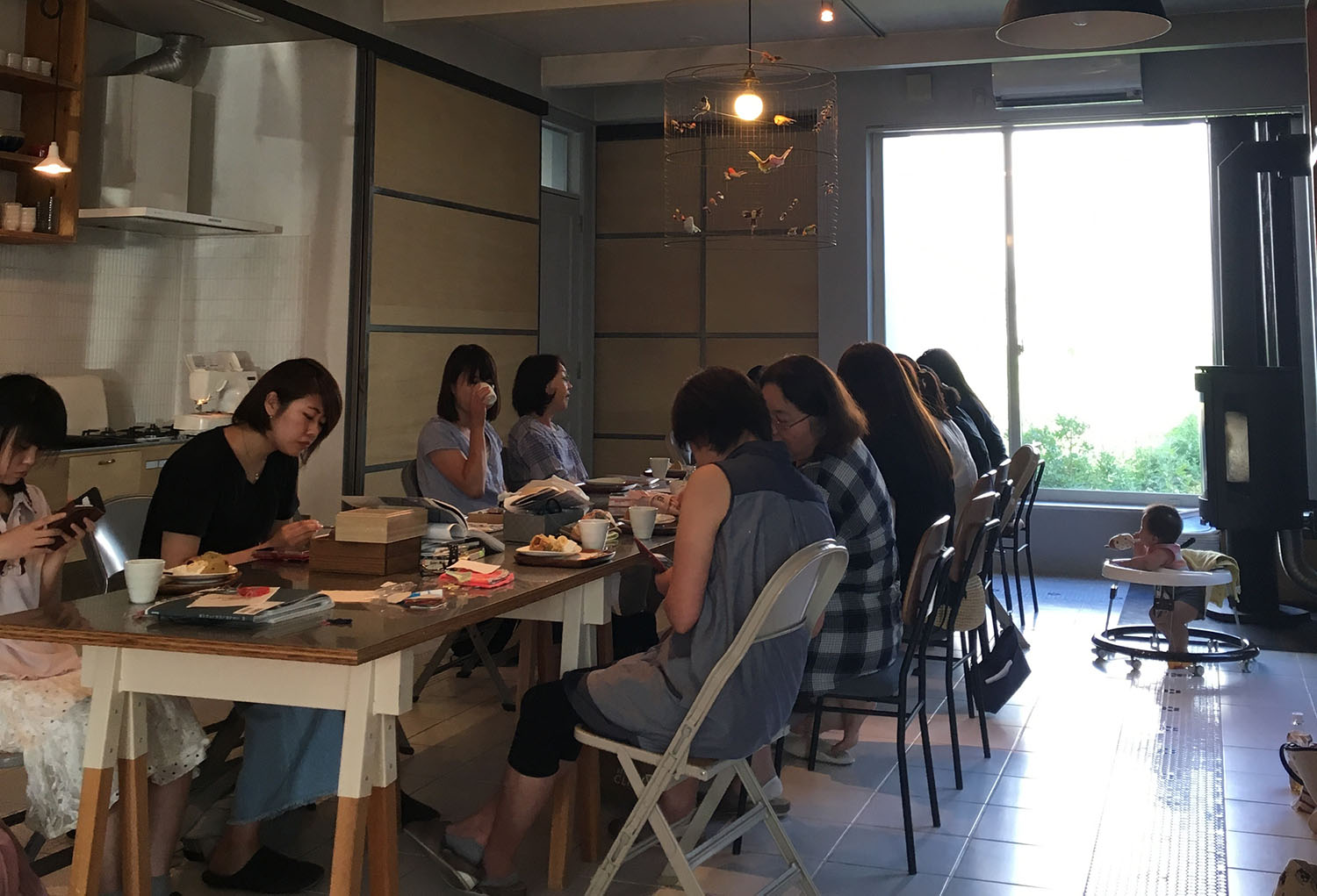
When Ms. Kudo started this lesson in 2014, she was worried about her lecture of Kogin because she was not experience, but she thought that it would be taught to those who want to try it, so she accepted the lecturer. Initially, there were people who were transferred from the another area wanted to try it. So it was a lesson where many people would experience it for the first time, but gradually people who are accustomed to kogin also participate, It has become a place for kogin lovers to gather.
Over the course of Ms. Kudo herself, she became aware of deepening Kogin every day in order to increase the amount of information that can be conveyed, not just technology. In her lesson, they can enjoy Kogin with the prepared kit, or bring their works in and make it. The original lesson kit was prepared only for bookmark, but as the number of variations increased in response to the demands of the gathering people, she finally reached 20 types.
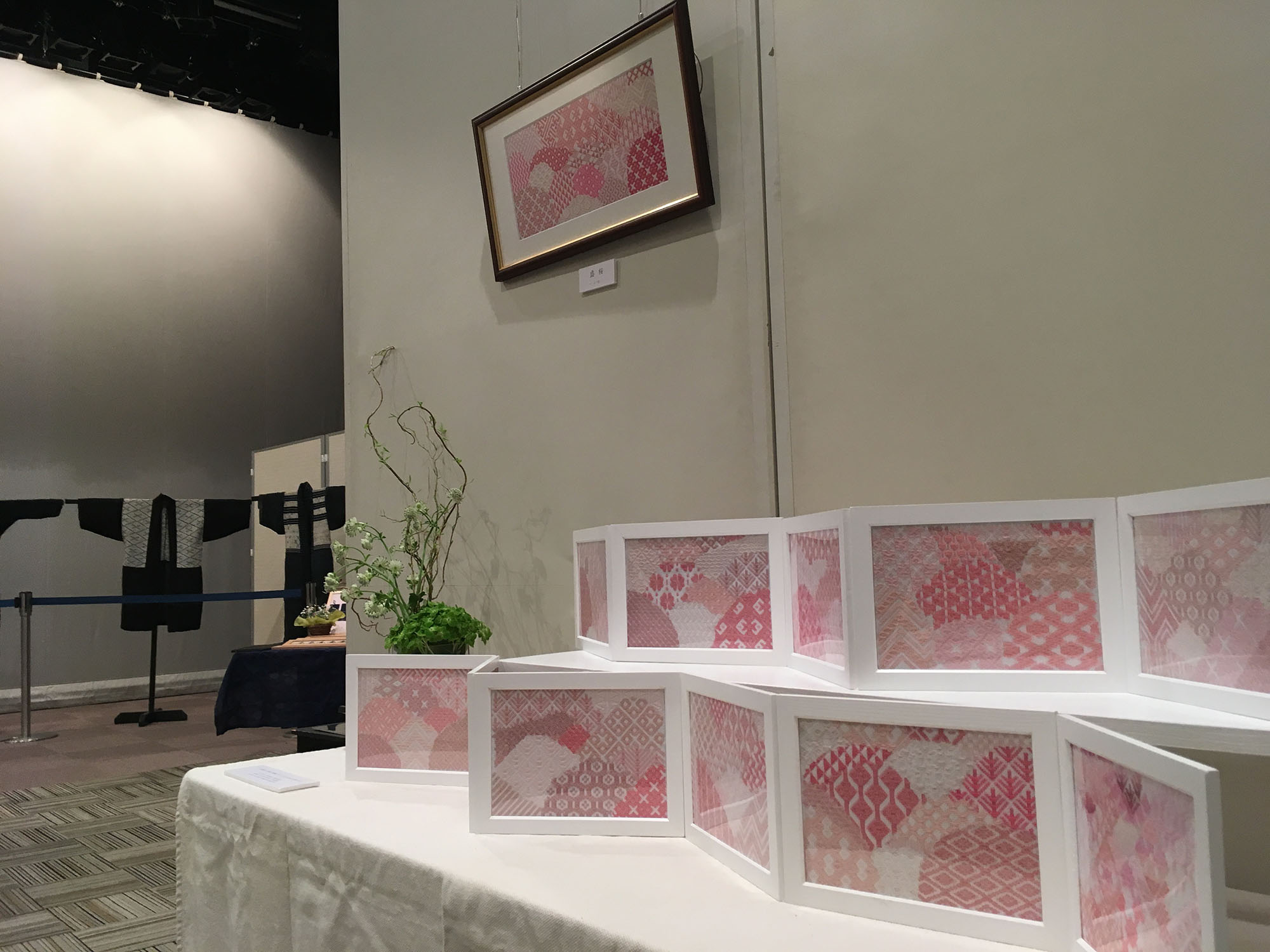
This pink kogin frame works became a lesson kit at the request of students who saw Kudo’s work. The various pinks and kogin patterns are so cute that you who can make kogin may want to make it anymore. This kit is named “Morizakura” after the work name of Ms. Kudo.
The state of the work display above is Kogin Fes last year. Requests from visitors at that time made it possible for non-lesson members to purchase. At last year’s Kogin Fes, she recruited and exhibited Morizakura works from all over Japan. Unfortunately, the plan to call out to the kit buyers for this year’s exhibition was not realized, but you can see this cherry blossom at @watashi_to_kogin_to.
Among the works introduced on Instagram, there were some big ones. These “Auntie Collection” are works of students’ relative. Although she is old and has not made any works at this time, she used to go to the lesson and made many works. The cheers were amazing when Ms. Kudo watched this work with everyone in her lesson. It seems that they got a very good stimulus towards each works. Since it’s a great chance, she hope that people all over the world will also see them. So she introduce them on Instagram along with the work of her lesson.
Each post of @watashi_to_kogin_to has a comment from its creator. I read them and these make my daily life enjoyable. So that someone close to them will be pleased. It seems that every works has the desire to make the users happy.
Kogin-zashi was a representative of japan folk art -Mingei- because it had the amaging functional beauty that anonymouse farmers who stitched cloth for the purpose of making clothes warm and durable. However, these function has become unnecessary as the life evolves. I wonder if the modern kogin, which has changed from making kimono to hobby, is folk art, and I wonder what the value of kogin today is as folk art.
In the sentence that Soetsu Yanagi once introduced Kogin in the magazine “Kougei -工芸-“, He praised the women who are the creators of Kogin Sashi extremely, and I feel that it is not Kogin Sashi and it’s the wemen that he was the feature. At the same time, I think folk art -Mingei- is not just about beauty. I think that the healthy feelings that spring up in the emotions of the creators while moving the hands are an important element of folk art. I think through these works that kogin still has the pleasure of making products and the pleasure that users can have, like that as they used to.
Ms. Kudo has experience in Kogin workshops in Tokyo and abroad, but in Aomori there are many people who are familiar with kogin even if they does not have experience in Kogin, so the lesson will proceed quickly. But in other location it is completely difference, there are many inexperienced people, and it seems that they can do their best by understanding how to see and stitch a design in a limited time. But in France, everyone was very interested and enthusiastically asked questions and made notes.
As you may know, there are several ways to express a pattern. She prepared an easy-to-understand pattern to express the pattern across the grid lines, but she found that it was easy for French people to understand how to fill the grid to make the pattern. Lessons in different cultures have new implications.
Overseas, the name “Sashiko-刺し子-” is known, but “Kogin-こぎん-” is not known at all. I hope “Kogin” will become a common language in the world. She told me at the end.
This is the instagram account where kogin fans all over the world can enjoy the various charms of kogin.You may also get some inspiration for your works. Please take a look!
Click here for Instagram @watashi_to_kogin_to’s profile


